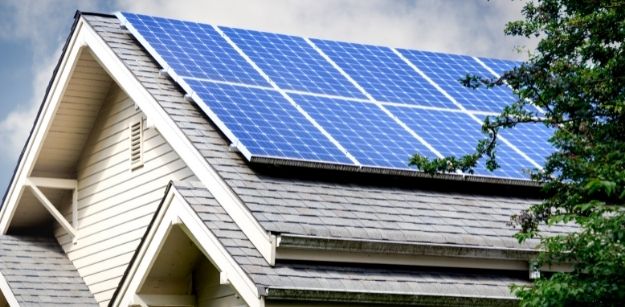Solar panels are one of the most active advancing forms of renewable energy on the market. It will help you save energy that often comes from the grid and cuts your energy bills, and can make you an excellent financial return.

How does it work?
It’s essential to understand how solar energy works because it helps us better know how to save energy. If we put it into simple words, solar energy is the power generated from the sun – not its heat. The captured light is converted into solar power, giving your free home electricity.
A solar panel has 60 or so PV cells correlated that convert sunlight into power. Inside each Photovoltaic Conversion (PV), known as direct conversion cell, are a couple of thin layers of silicon sandwiched within two metal connections. When sunlight hits the top silicon layer, its electrons flow down towards the bottom panel as a (DC) direct current. With the aid of metal connections, this step becomes an electrical circuit. It will need an inverter to power your home. An inverter is an integral part of the whole system. It transforms the DC – direct current generated by your solar panels into the AC – alternating current that our electrical devices need to work. The inverter takes the DC and moves it into a transformer to become the typical household 120 or 220 volt AC. From there, the current runs within the fuse box and meter to your appliances. You must note that any electricity you don’t use can go back into the national grid, and this will technically generate a bill to prevent that choose inverters that got limiter.
How much can I save if I go solar?
Solar energy is a bit more complex than any energy company. This is because all of us got different needs, different roof design, goals, and budgets. Another variable to study if you want to know how much you can save would be your location. The amount of sunlight that your panels meet would be varied. Nonetheless, you can save a lot using solar.
The advantage of this is that you have a chance to make this work for you and your family; along with the new trends in solar installation, changes in solar panel effectiveness, and creative payment schemes, solar energy can be an essential money-saver for many families. Before diving deeper into how much you can save with solar, you should first analyze how much it would cost you and choose the size that fits your needs.
The best way to maximize your produced solar power and save money is to apply for net metering. It is a billing mechanism that provides credits to households and businesses that take advantage of making their electricity through renewable resources, such as solar. If a utility consumer has a solar PV system installed on their roof or property, there’s a chance they might produce more electricity than they consume during daylight hours. Of course, this varies and depends on several factors, such as the size of the solar panel system and the energy consumption habits. With net metering, the electric meter will run backward to credit the electricity used when the energy usage surpasses the system’s output.
Net metering can save those with their solar PV system a lot of money on their energy bill every year. It can decrease strain on the energy grid’s distribution and reduce energy loss from sending miles away from the nearest power plant. Net metering allows customers who generate their electricity cleanly and efficiently to take more significant benefit of the investment installed on their rooftops, helping to lower their yearly electric bill.



